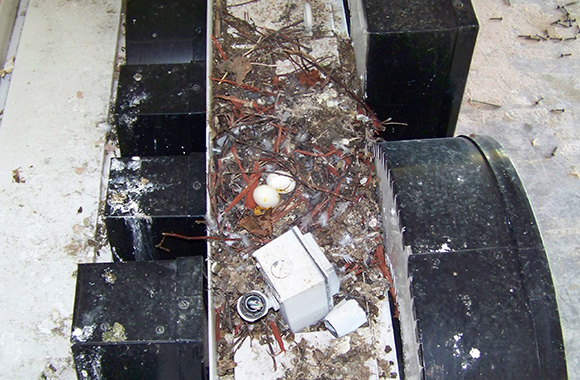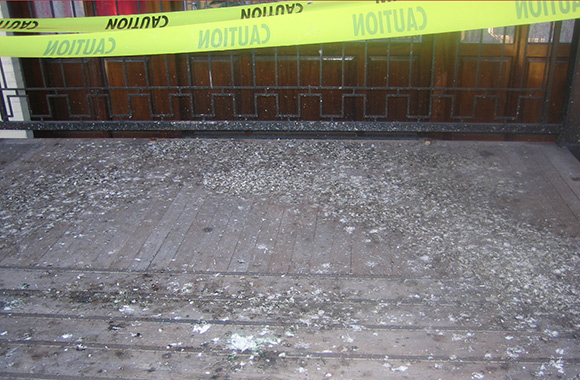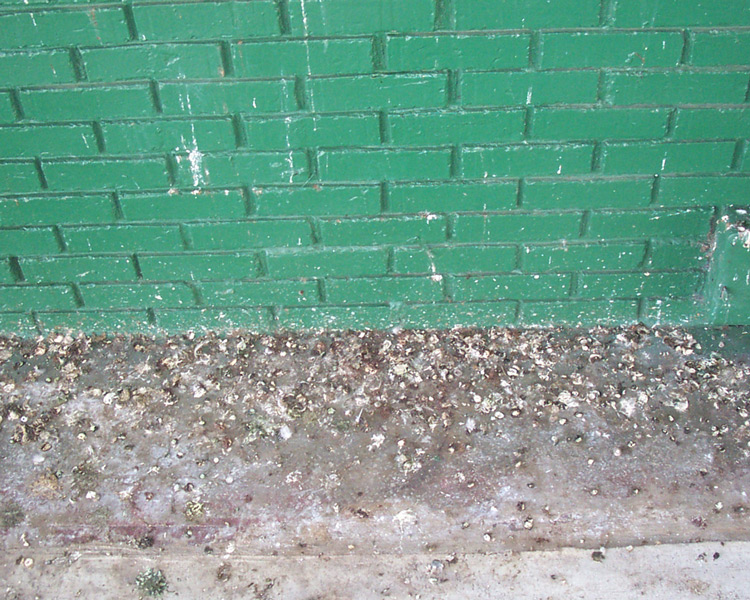Is bird feces dangerous to touch or breathe
Several species of birds leave behind droppings and feces in urban settings or buildings. It is a common observation that on yearly basis different kinds of birds such as crows, pigeons and seagulls cause serious kind of damage and inflict huge cleanup costs to the owners of buildings and government agencies. The biggest threat comes from droppings of pest birds as they are known for carrying approximately 60 diseases that are transmittable. Many of these pathologies get transmitted to other animals and humans and health related issues are imposed. However, things can be controlled if precautionary measures are taken and droppings are cleaned in a decent manner.


Stay aware
It is important that one should be aware of the threats or issues which are normally associated with droppings because only then you will get in a better position of handling the situation. Biggest threat comes from the disease organisms that grow in bird droppings as they provide an ideal growth medium and contain many nutrients. Not only droppings of birds, but also their feathers become a source of trouble so these should be cleaned with proper care.
The droppings not only look bad, but also they are extremely difficult to remove in many cases they also contribute in occurrence of different kinds of slipping and falling accidents. The main question is that for human health how dangerous bird droppings are? In true words it is not easy to quantify the risks which are imposed by droppings to humans because in all cases exposure to pathogens is not always going to result in diseases and many of the diseases related with birds are not reported as well. However, it is best that one should be careful while dealing with such issues and only move ahead after proper knowledge.
Let’s put a look at some of the transmissible diseases which are associated with birds like geese, house sparrows, starling and pigeons.
Histoplasmosis
In the list of diseases which are transmitted by birds histoplasmosis comes at top. It is basically a respiratory disease that can bring dangerous outcomes. It is normally caused because of fungus that grows in droppings of birds. This fungus can be in the form of filaments or yeast.
Cryptococcosis
This is caused by yeast, which is present in the intestines of pigeons. The disease starts in the form of a pulmonary disease and later affects central nervous system. For this reason, one should be extremely careful while dealing with nesting sites as well as roosting places of pigeons such as mills, schools, ledges, barns and parks.
Salmonellosis
This generally occurs in the form of food poisoning and it is associated with rodents, pigeons and starling. The disease causing bacteria is normally found in the dropping of birds. Dust which gets deposited on droppings is sucked by air conditioner and ventilator and it contaminates food along with other cooking surfaces of restaurants.
St.lousi Encephalitis
This is one of the nervous system inflammations and normally it is responsible for causing fever, headache and drowsiness. It can even lead to paralysis or death and can occur at any age. Mosquitoes are the main culprits behind spread of this disease that had dined upon infected birds. Therefore, you should be careful there is a large number of mosquitoes present in your area.
E.Coli
This is one of the common infections that are normally caused by enteric bacterium. It is generally traced in fecal matter. When rodents or birds visit different sites they carry it and spread it among humans.
Ecotoparasites and birds
Birds not only act as direct carriers of diseases, but their activity is also associated with different kinds of ectoparasites that can bite humans. Let’s put a look at some of them so that readers can get in a better position of understanding.
Bed bugs
They draw out birds from hosts which can either be humans or other domestic animals and in extreme conditions they render the victim anemic. They are generally carried by house sparrows, starlings and pigeons.
Yellow mealworms
These are one of the most commonly occurring beetle parasites that inhabit the nests of pigeons. They are also found grain products in fact they can even be present inside the cereals that you eat during breakfast.
Chicken mites
These are known for carrying encephalitis and can even cause acariasis. They can also attack humans and are generally associated with hoses sparrows, pigeons and starlings.
In short, a variety of threatening conditions are associated with the droppings of birds so one has to be extremely careful while dealing with them.
Read about How to remove pigeon feces from concrete and How do I clean bird feces out of my attic for cleaning tips.
Is pigeon feces dangerous? Sorry to be blunt with the answer but yes, pigeon feces is actually very dangerous to touch and breathe. To put it even more bluntly, you won't want you, your family, or your household pets to come anyway near the waste matter that pigeons leave behind. It's crawling with disease risks, most of which can be passed onto humans and other animals. Both fungi and bacteria thrive in these disgusting conditions and it won't be a simple case of just washing it away. You'll need to use a biological cleaner, one that breaks down the enzymes, and a lot of tough scrubbing. You should wear a mask and seriously heavy-duty gloves, and make sure you dispose of everything you used in the correct manner. I would suggest a fire. There are a number of problems surrounding pigeon poop, and not just the fact that it's highly acidic and will not only stain but also corrode most materials it comes into contact with. Salmonella is one of the biggest concerns, a very nasty stomach bug that can render anyone who catches it basically zombie-like for a number of days. In those with an already weakened immune system, a touch of the ‘tummy bug' can actually her deadly serious. Psittacosis is just one more disease you'll need to concern yourself with, a rare disease that can be spread from contaminated soil, crops and even wateranything that has been in contact with the pigeon guano (pigeon droppings).

Yes, bird feces is dangerous to touch or breathe — and this applies to feces that is wet or dry material.
A wide range of diseases have been associated with birds — more than 60 in total. Some of these can be passed to humans, including salmonella, histoplasmosis, psittacosis and St. Louis Encephalitis... and these are just the tip of the iceberg.
Bird feces is dangerous when it is wet because it could contain live bacteria and other disease-causing organisms. That’s not where the danger stops, though. Dried material can become dusty, and dust travels easily through the air. When you sweep up bird feces, you are potentially sending histoplasmosis and salmonellosis spores into the air where it can then be inhaled.
When you are dealing with bird feces, or working in the vicinity of bird feces, it is highly recommended that you protect yourself with breathing masks. Tiny particles of invisible dust could travel on your clothing back home, where bird-borne diseases could go on to affect your loved ones.
Working with wild animals, or in the vicinity of wild animals, is always going to be a dangerous affair, but the feces can often be more dangerous than the wildlife itself. It is recommended that you do some research and equip yourself with the right safety gear, or hire in a professional that already has the right tools for the job... and can probably get the job done a lot quicker!

